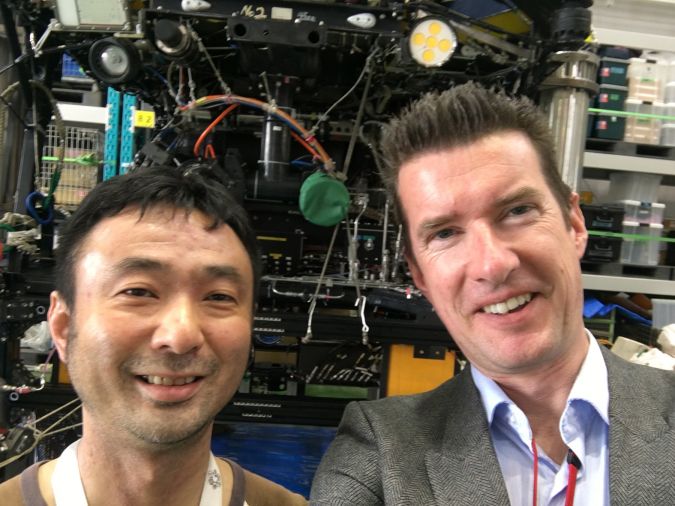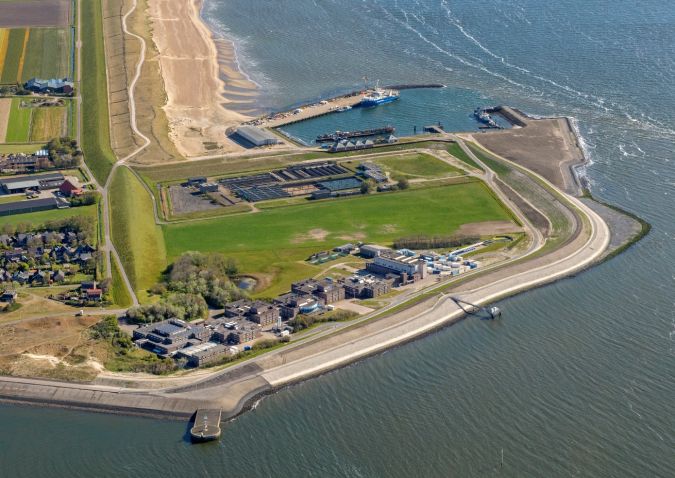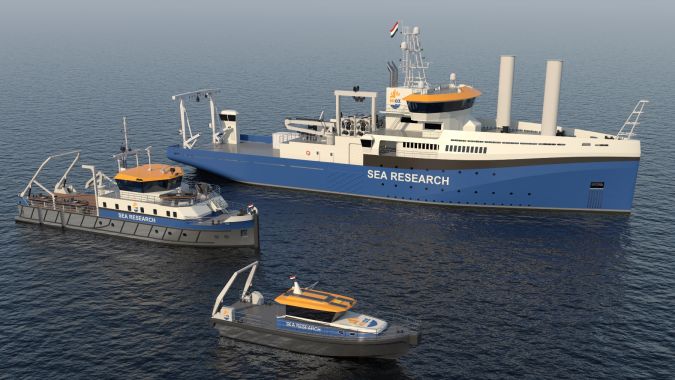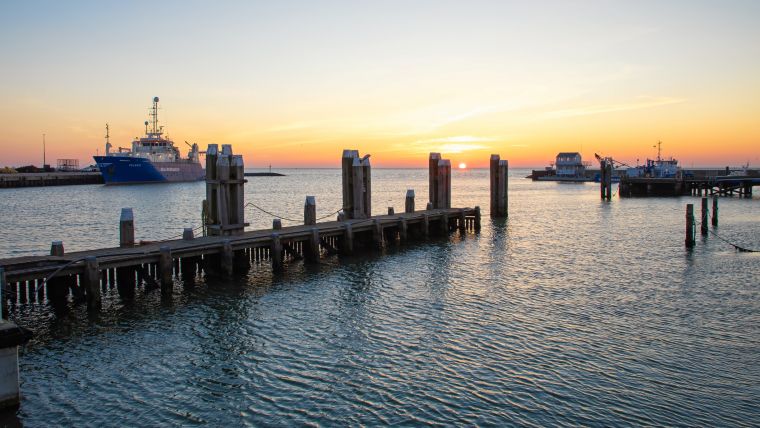Ocean crisis: the future of our seas
Interview with Gert-Jan Reichart, Royal Netherlands Institute for Sea Research (NIOZ)
Gert-Jan Reichart divides his time between the Royal Netherlands Institute for Sea Research (NIOZ), where he is head of ocean research for four days a week, and Utrecht University, where he works one day a week. Hydro International spoke with the marine researcher, who is deeply concerned about the state of the oceans and their often underestimated role in the global climate crisis. When asked what the most important issues are that society must resolve in relation to the ocean, Reichart answers that he believes there are three. He starts with the most urgent.
“CO2 is one of the biggest causes of the greenhouse effect, but 95% of all CO2 on Earth is found in soluble form in seawater. The remaining amount, about 5%, is responsible for the greenhouse effect. Also, if you look at all the ‘active’ carbon on Earth, most of it is found in the ocean, with just a small amount in areas such as the tundra and the tropical forests. We often forget that the ocean absorbs most of the CO2 that is emitted, while we know very little about the effect that CO2 has on ocean life.
Many of these aspects are not yet well understood and, while it is a big issue for mankind, it receives very little attention, certainly compared to the effects of CO2 on land.”
What is the second issue?
The warming of the oceans. When it comes to the warming of the Earth, we always talk about the warming of the atmosphere. However, the warming that we feel is only 1% of all warming. About 97% of global warming is absorbed by the oceans. In fact, the oceans absorb the energy of five atomic bombs every second. In 100 years, we have released millions of years of CO2 that had been stored as carbon by burning it at a rapid pace. As long as that CO2 is in the atmosphere, it warms up the Earth, with 1% of the heat absorbed by the warming of the landmasses, and 1% by the warming of the atmosphere. Another 1% or so contributes to the melting of sea ice. The ocean absorbs the rest of the heat, while also becoming more acidic due to the extra CO2, with potentially major consequences for biodiversity. Corals are an obvious example, but it also has impacts in the deep sea.
And the last?
The third important issue is pollution. Most of us know about plastic soup – anyone who watches the news cannot help but be aware of it. However, plastic soup is probably not the biggest problem. The biggest problem is all the plastic that has ‘disappeared’. Research shows that 98% of the plastic that finds its way into the world’s rivers cannot be traced in the ocean. That means it is probably floating around in the form of microparticles that are absorbed by fish and other animals, even as small as plankton. So, although the Ocean Cleanup is very good for raising awareness and creating a sense of urgency, cleaning up the plastic in the ocean is only a small part of the solution, which is why Ocean Cleanup is now also focusing on preventing pollution at the source, along the river banks. That plastic can then no longer disintegrate and form microparticles.

What concrete steps do we need to take now?
We must protect the health of the oceans, and therefore the world, as soon as possible. It has also become clear to the United Nations that this is a major problem. What can we do? In any case, we need more legislation and knowledge. The Netherlands is only a small country in the international context, but at Royal NIOZ we are working on setting up programmes, for example to monitor the speed of the Gulf Stream and the cycles of the Atlantic Ocean. These types of programmes are always carried out in international partnerships, for example with the US, the UK and France.
You mentioned the UN. What is the contribution of the Netherlands to the UN Decade of Ocean Science that starts in 2021?
Indeed, the UN has declared the next decade the ‘Decade of the Ocean’ – an important step. Europe is currently investigating whether we can make a digital twin of the ocean, under the name Digital Ocean. This will allow us to make better predictions about changes in the ocean and therefore changes to climate on Earth. This Digital Ocean project accounts for a large part of the European contribution to the UN Decade of Ocean Science.
What do we need to stop doing today to prevent further damage to the oceans?
CO2 emissions need be reduced as quickly as possible. However, this probably won’t be enough; we also have to start thinking about a solution-oriented approach, for example to combat acidification. A major advantage of this is that, with some of the solutions to combat acidification, you can also work on extra storage capacity for CO2 in the ocean. An example of this is the promotion of rock weathering, for example by adding gravel to the ocean. Rock weathering provides a counterbalance to acidification as it makes the ocean more alkaline. However, as I said, this cannot be done in isolation: you also have to look at reducing emissions and alternative CO2 storage – for example in old gas fields.

What role is there for hydrography and the professionals working in it?
Hydrographic knowledge of the subsurface – the seabed – is extremely important. We need to gather more knowledge of the subsurface to be able to deploy the right solutions. Decisions about the use of gas fields for CO2 storage and the targeted application of ‘enhanced weathering’ also require detailed knowledge of the seabed.
The Netherlands is a small country with a lot of sea. Do we appreciate the urgency of deep sea research enough here?
I always try to work with many different partners for research studies in which we are in the lead, so that everyone can contribute something, including the government.
However, deep sea research is very expensive. There is no getting around it, and it has to do with the complexity of working at sea, and especially in the deep sea. Little is known about deep sea research, which doesn’t help either. We need to improve ‘ocean literacy’ to increase investment in this area. There are of course programmes such as the Blue Route, but in general it is difficult to obtain funding for marine research in the Netherlands, especially compared to other countries such as France and Germany. Germany in particular has a very short coastline but invests heavily in research and institutes such as GEOMAR in Hamburg and MARUM in Bremen.
Crowdsourcing can be an easy way of obtaining extra data. Does Royal NIOZ take part in crowdsourcing?
We do sometimes place test equipment on boats. For example, we have obtained a lot of data from the ferry between Den Helder, on the mainland, and Texel, the island where part of our institute is located. One of the things that this equipment does is to collect data that we use to examine the transport of sediment in the Wadden Sea. We do not have any larger, autonomous measurement systems, so crowdsourcing could play more of a role.

There are currently large philanthropic clubs operating in ocean research, such as the Schmidt Ocean Institute and REV Ocean. How does a small institute like NIOZ view this?
I think it is very good for awareness. To achieve something, we need a lot more knowledge of the ocean, also among the general public. The ‘ocean literacy’ has to grow. These organizations have the money to make slick, professional films that help with that. We don’t have that kind of money. It is also the case that scientific research benefits from the total capacity for research, which of course is increased considerably by the research vessels, such as those of REV Ocean and SOI. However, ocean research is so important to society that governments should not leave it to commercial or philanthropic parties alone. Perhaps these parties also help governments to realize: ‘we are doing too little’. That would be a bonus.
Picture this: You are in a space station, perhaps owned by some philanthropist, looking at Earth and more specifically at the ocean. What do you see? What comes to mind?
First, that planet Earth should actually be called planet Ocean. Secondly, although I don’t know if you can really see it, but if you can, it is only from space that you appreciate the extent of the damage that we have caused. I would probably also realize that the climate crisis should probably be called the ocean crisis.
New research vessels for NIOZ
"We are indeed getting two new ships. The tendering procedure for one ship has already been completed, and the tender for the largest vessel is still ongoing. The new ships will be equipped with the most modern research equipment available."
Gert-Jan Reichart is head of ocean systems research at NIOZ, Texel, The Netherlands (the Netherlands Institute for Ocean Research) and professor in marine geology at Utrecht University, The Netherlands.

Value staying current with hydrography?
Stay on the map with our expertly curated newsletters.
We provide educational insights, industry updates, and inspiring stories from the world of hydrography to help you learn, grow, and navigate your field with confidence. Don't miss out - subscribe today and ensure you're always informed, educated, and inspired by the latest in hydrographic technology and research.
Choose your newsletter(s)
























